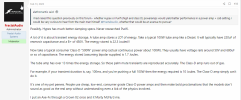riffsordie
New Member
I just got a new FM3, but I haven't gotten to dive into it yet. I plan to still push air on stage with a real amp and 4x12 cabinet. I want to hear from experienced users about whether the Fractal gear sounds better when amplified by routing to the FX return of a tube amp VS into a clean solid state power amp. Which sounds better? Does anyone notice a difference that's worth mentioning?
If routing to the FX return of a tube amp, is it wise to send the signal without the Fractal amp block's "supply sag"? (I know not to use a cabinet block on the signal that's going to the real amp+cab).
Thanks for your help!
If routing to the FX return of a tube amp, is it wise to send the signal without the Fractal amp block's "supply sag"? (I know not to use a cabinet block on the signal that's going to the real amp+cab).
Thanks for your help!


